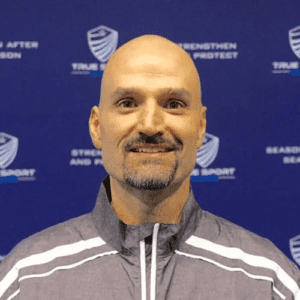ORIGIN:
Spinous process of the vertebrae T1-T5. (Dead center in your spine just below your neck)
INSERTION:
Medial margin of the scapula inferior to the scapular spine. (The inside border of your chicken bone)
ACTION:
Stabilization, retraction, elevation and internal rotation of the scapula.
REFERRED PAIN:
In the one picture you can see the “X’s.” These mark the areas where trigger points can be located. The red stippled area is the area where pain can be referred.
DISCUSSION:
This muscle warrants a deep discussion. The shoulder is arguably the most complex joint in the body. It is composed of 3 articulations, 1 bony, and 1 false. The glenohumeral joint is the ball and socket in the shoulder. The AC joint is the scapula’s attachment to the clavicle, and the final false joint is the scapulothoracic “joint.” Your wing bone floats on your ribcage and is held in place by muscular structures. The rhomboid is critical in controlling scapular motion. The better control over scapular motion, the better the shoulder function becomes. Unfortunately, the rhomboid is one of the most commonly underutilized muscle in the shoulder girdle. It is also a very hard muscle activation to teach. We have some interesting activation movements that facilitate someone’s awareness about the rhomboid. It has far reaching potential. An inhibited Rhomboid can cause rotator cuff tearing, labrum disruptions, shoulder or arm tendonitis, neck pain, back pain, and arm pain. Learn how to activate your Rhomboid!

